What is science art and why does it matter?

The author
I am Dr. Elisabeth Kugler, a biomedical image analyst who works also as a science artist. During my education and academic work, I focused on digital science art, which derived from the data I worked with, because I was inspired by the sheer beauty of life seen through a microscope. Using Twitter, I started to share my work with others and was able to build a solid network and social media following.
Why science art?
The beautiful thing about art is that it evokes an emotional response, independent of whether we think of it as beautiful or fully understand its content. For example, even though I do not fully understand the physics of black holes, in the depiction of the black hole M89 in 2019 I was intrigued to see its beauty and it sparked large interest across the world. Science art is a way to draw, craft, or render scientific subjects in a way that they become art.
In my science art I use images from microscopes where I study how the eye develops and forms in zebrafish, and turn these microscopy data into art. Manipulating and creating something artistic from these data allows me to engage with wide audiences beyond my scientific work. Importantly, as most of my work is conducted using zebrafish as animal models to study developmental processes, my science art is an important way to engage people with discussions about science and animal research.

The process
As a biomedical image analyst, I get to work with a lot of different data, as well as different data analysis steps. So, to understand the data better, I often change them on purpose 'too much', to understand different properties of the data and which processing for the scientific data analysis could work best. For example, is there a lot of noise in the data? Could we work in 2D or do we need processing in 3D? Below, I give examples of the process and how this ultimately leads to digital microscopy science art.
Example 1: The image taken was from a 3D virtual section of retinal cells – as shown here on the left – and was rotated, aligned, and reduced in 3D. Next, I extracted the data and isolated features of interest, such as the surface. Then I studied what I would like to present – in this case, I wanted to show the texture and varying surface of these cells across the 3D space. To show 3D in a 2D image, one has various options, such as working with layers of colour, hue, or texture. In digital images it is a bit more challenging to convey texture, as the physicality of paint is taken away. So, one thing that I found to work well is to use different colours and hues to colour-code for depth. Here, the last two images are colour-coded by depth, so we can perceive the 3D anatomy in a 2D image. The difference between the last two images is the colour palette and the mixing, to evoke different responses (i.e., the blue tones are cooler).

Example 2: The image was taken with a light sheet microscope to visualise parts of the brain vasculature in a developing zebrafish. Using a double-transgenic zebrafish, we visualized the blood vessels and their individual cell nuclei. Then, being interested in what space is taken up by individual cells, I extracted the nuclei and analysed their surroundings in 2D. Even though the image produced looks like a nice pattern, analytically I knew that I had a lot more work to do to analyse the space taken up in 2D and study the data in 3D. For example, can you spot where two nuclei are merged where they shouldn’t be?
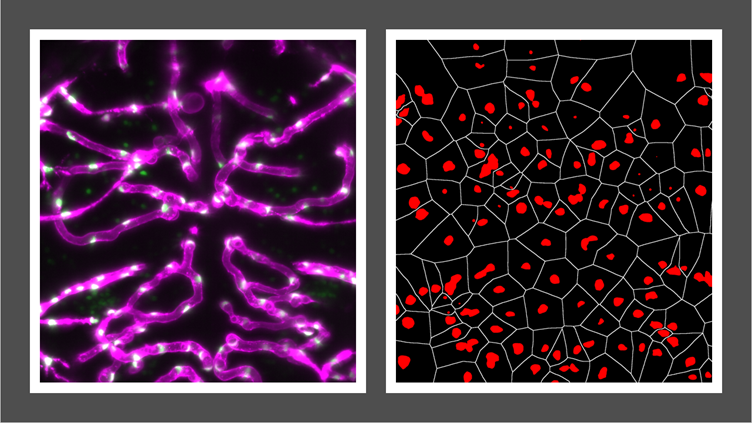
How do science and art inspire each other, and how they inspire me?
The experiments and data analysis approaches I develop for science are very data-driven, with the need to adhere to protocols and follow techniques, so there is little room to be creative. However, communicating and presenting data is the other half of science, and for me this is where I can be creative. When working with images and microscopy data, the data themselves are highly inspirational to me, and indeed this is where science art started for me.
Saying this, I was always torn between science and art, and from an early age I was as fascinated by drawing across my parents’ furniture as by collecting rocks or bugs. So, there was an indication of 'science art by science and art' from early on in my life.
However, even though I always loved art and science art, due to my focus on work, art always came second. So, following my Postdoc at the prestigious UCL, I took a sabbatical to focus on science art before taking my next career steps. This allowed me to study new media, take courses, and examine new artistic avenues.
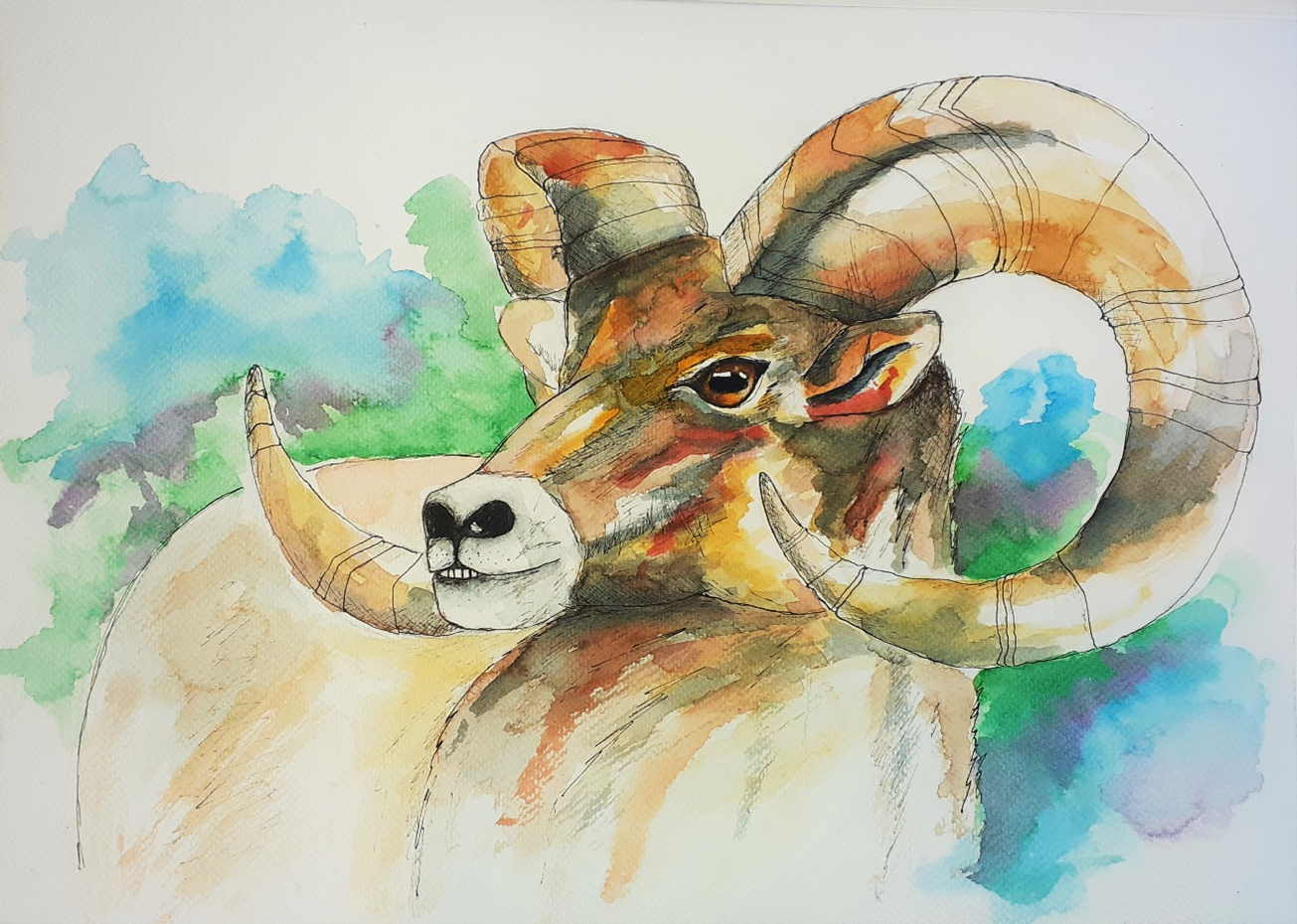
What’s next?
Science art is a unique way to engage with people. If possible, I would like to focus more on science art to share the beauty of microscopy, highlight the importance of science, and show that scientist can be highly creative. Taking a sabbatical helped me to revalue my work and the importance of science art.
I am currently working with a gallery to establish the direction of my work for the next year with the aim of establishing my first solo science art exhibition. This is particularly exciting, as the gallery is helping me to establish the presentation of my work, the market values, and what the best steps are to develop my work. Currently, I am testing different products to showcase my previously digital art as physical pieces (be it canvas, board, gloss, gesso, or frames...) as well as establish how my original art complements the digitally produced work. For the latter, I am focussing on learning new techniques to widen my repertoire, but also to establish my own style. Together, there is still a lot to learn and explore, and I am really excited to see where this journey is going.
Learn about Elisabeth’s science art journey
- Science Art Opinion Piece: Barresi MJ, Coen E, Kugler E, Shuda J, Sung DC. Engaging new audiences with imaging and microscopy. Development. 2021 Sep 15;148(18):dev199942. doi: 10.1242/dev.199942. Epub 2021 Aug 10. PMID: 34897400. https://pubmed.ncbi.nlm.nih.gov/34897400/
- Science Art Interview: https://thenode.biologists.com/sciart-profiles-elisabeth-kugler/science-art/
- Science Art Outreach Piece: https://issuu.com/naturevolve/docs/naturevolve_issue_10
- YouTube: https://www.youtube.com/watch?v=OFqxHCBSvGw&t=4s
Find out more
- Website elisabethKugler.com
- Twitter @KuglerElisabeth
- Instagram @drkuglerelisabeth
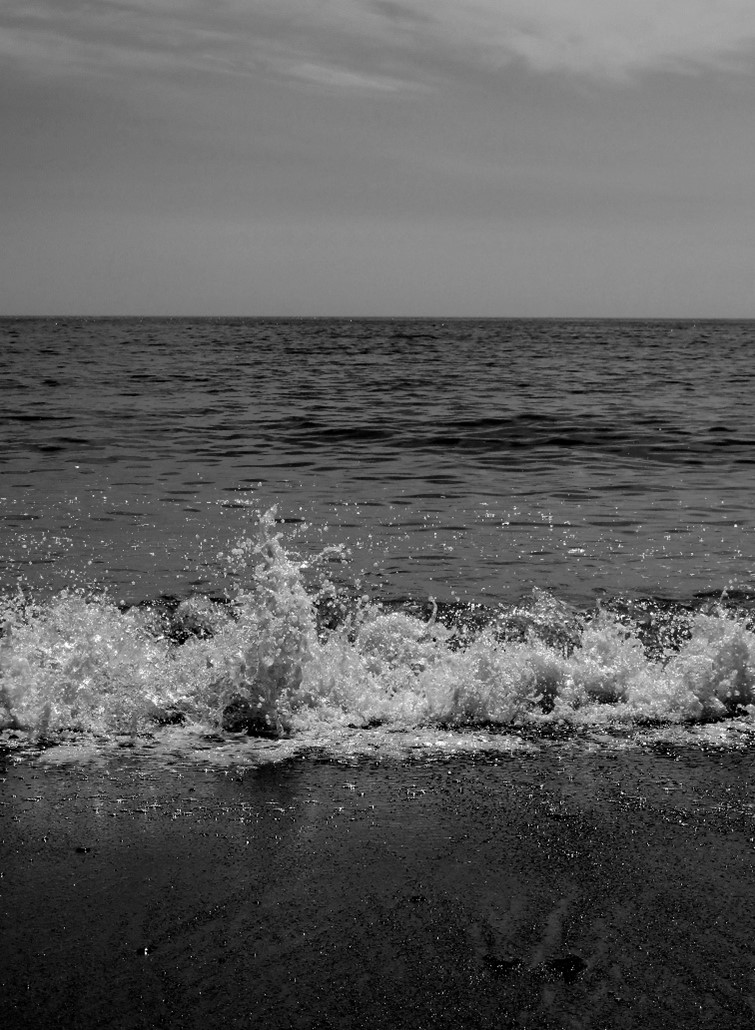
Top image by Elisabeth Kugler

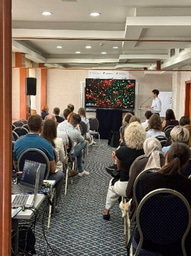

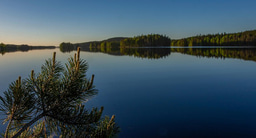
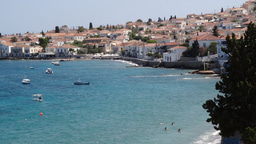
Join the FEBS Network today
Joining the FEBS Network’s molecular life sciences community enables you to access special content on the site, present your profile, 'follow' contributors, 'comment' on and 'like' content, post your own content, and set up a tailored email digest for updates.